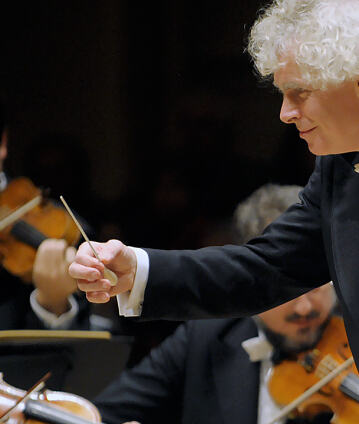Interview
La Première de Gustav Mahler – une introduction par Sir Simon Rattle Sir Simon Rattle dirige Mahler et Rachmaninov

Mahler était encore dans la vingtaine lorsqu’il composa sa Symphonie n° 1. La souveraineté dont il fait preuve dans le maniement d’un effectif orchestral gigantesque n’en est que plus surprenante. À la fraîcheur turbulente de la symphonie, Simon Rattle oppose dans ce concert les Danses symphoniques de Sergueï Rachmaninov : dans son œuvre ultime, le compositeur exilé aux États-Unis évoque une dernière fois le langage musical de sa Russie natale.
Berliner Philharmoniker
Sir Simon Rattle
© 2010 Berlin Phil Media GmbH
Interviews liées au concert
Artistes
Nos suggestions
- Le Concerto pour violon de Brahms avec Christian Tetzlaff et Simon Rattle
- Simon Rattle dirige la Neuvième de Mahler
- Concert de la Saint-Sylvestre 2011 avec Simon Rattle et Evgeny Kissin
- Ouverture de la saison 2011 : Simon Rattle dirige la Septième de Mahler
- Simon Rattle dirige la Troisième de Mahler
- Simon Rattle dirige Haydn, Schubert et Hosokawa